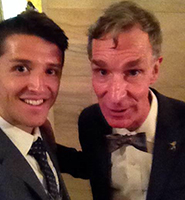 |
| A file photo shows a catch of dead fish and crabs that taken while trawling in the Chesapeake Bay. Oxygen-deprived dead zones, such as the one that hit the northern bay this summer, suffocate marine life. (Photo Courtesy VIMS/Daily Press) |
By Tamara Dietrich, tdietrich@dailypress.com
The forecast for bigger dead zones in the Chesapeake Bay this summer finally bore out last month — at least for the upper bay.
The Maryland Department of Natural Resources reported the eighth largest dead zone on record for early August, a 1.32-cubic-mile swath from Maryland's Chesapeake Bay Bridge to the Potomac River with oxygen levels so low it was deadly to marine life.
Virginia's lower bay, meanwhile, has largely beat the odds and the forecast, compared to years past. The prediction was announced in June by the National Oceanic and Atmospheric Administration (NOAA).
Oxygen loss that's severe enough to kill blue crabs is called hypoxia. When it's low enough to kill all aquatic animals short of the microscopic, it's called anoxia.
The lower bay is less prone to dead zones in part because of its proximity to the oxygen-rich Atlantic Ocean, which helps aerate its shallower waters.
Weather and other environmental factors can also help keep a dead zone from developing — storms and winds can whip up and oxygenate the water, and lower temperatures can impede algae growth.
In fact, the bay also recorded its smallest dead zone for July in 30 years of data collection largely because Hurricane Arthur passed along the coast, roiling and mixing the water column.
"We had no anoxia at all in Virginia so far this summer," said Carl Friedrichs, chairman of the physical sciences department of the Virginia Institute of Marine Science in Gloucester Point. "I would think that's perhaps because of Hurricane Arthur's effects."
Snapshots and the big picture
Every year in early summer, NOAA-funded researchers forecast dead zone activity for the bay based on the amount of nitrogen flushed into it from the Susquehanna and Potomac rivers.
Then twice a month throughout the summer scientists cruise the main stem of the bay to sample oxygen levels and compare them to forecast models. Data from early August is the most recent publicly available.
VIMS helps analyze and model the data, but Friedrichs said the samples can only offer temporary "snapshots" of the bay — "It varies a lot from month to month."
In fact, NOAA hasn't released its most recent data to indicate if there has been any change in last month's larger-than-average dead zone.
"Given the weather we've had lately," Friedrichs said, "I would guess that it's increased. But it also could have decreased."
Friedrichs and his wife, VIMS biologist Marjy Friedrichs, are honing forecast models that could one day help fill the data gaps between the bi-monthly bay surveys.
With NOAA funding, the two are working with NOAA's Chesapeake Bay Operational Forecast System to add the size and location of dead zones to its predictions. Predictions currently include tide levels, currents, salinity and temperature based on rapidly changing winds and air temperature.
But fuller short-term forecasts that include dead-zone data, they said, could one day be used by commercial fishermen and recreational anglers to help find the best fishing grounds each day, for instance, or warn them to pull crab pots to avoid hypoxic areas.
They could also be used to help pinpoint the cause of a dead zone, whether it be weather, which can't be managed, or nutrient input, which can.
A better understanding of dead zones could also lead to better fisheries management in the bay for key migratory species such a striped bass and blue crabs.
Friedrichs said they hope to have their models operational within a year.
Excerpted from http://articles.dailypress.com/2014-09-03/news/dp-nws-bay-dead-zone-20140904_1_lower-bay-dead-zone-chesapeake-bay-foundation





